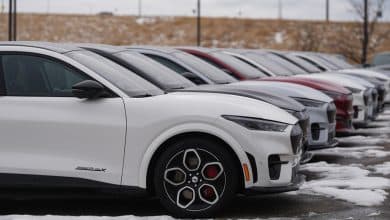Toyota promises a battery of nearly 1,500 kilometers of autonomy

The constructor Toyota has often been criticized for its electrification strategy. For many the manufacturer does not sufficiently prioritize the manufacture of fully electric vehicles, being overtaken by other manufacturers such as the South Koreans and some Americans in terms of volume, but also technical characteristics.
However, it seems that the Japanese company does not intend to stay behind for very long. At the technical center in Higashi-Fuki, Japan, it has just launched, among other things, its battery development strategy which includes vehicles with a range of nearly 1,500 kilometers and solid electrolyte batteries.
Contents
A first wave of lithium-ion batteries
The first stage would arrive in 2026, when a new generation lithium-ion battery, called “Performance” would be launched. This would have a higher energy density, which would allow it to obtain a range practically doubled compared to that found in a current Toyota bZ4X.
According to Keiji Kaita, head of battery development and president of the Carbon Neutral Technology Development Center, this battery, combined with improvements in vehicle weight and aerodynamics, would allow a range of around 1,000 kilometers. Above all, its advantage would be based on a reduction in costs of 20%, and a recharge of 10 to 80% in less than 20 minutes.

The second stage would consist of a double-pole lithium-iron-phosphate (LFP) type battery which would land in 2026 or 2027. Due to its technology which combines the connections of the anode and the cathode, this battery allows a 20% increase in range over the current Toyota bZ4X battery while reducing its cost by 40%. Although this battery seems to be less advantageous than the previous one, it could be intended for entry-level vehicles due to its more attractive cost.
Eventually, a nickel-based bipolar lithium-ion battery, dubbed “High Performance”, would arrive in 2027 or 2028. This would improve range by 10% compared to the 1000 km range battery and would cost around 10 % less to manufacture.

Solid electrolyte batteries
Two solid electrolyte batteries are also planned by the end of the decade. The first would arrive around 2028 and would allow a 20% increase in range compared to the lithium-ion battery of 1,000 kilometers. Then, another generation would allow about 50% improvement in range compared to the new generation lithium battery, which would allocate about 1500 kilometers of range. These two batteries would have a recharge time of about 10 minutes to go from 10 to 80%. Unfortunately, cost details are not yet available for this type of battery.
One can imagine that these new types of batteries could cohabit within the range. Some would have characteristics better suited to a specific vocation, which would mean that it would be prioritized for a specific type of vehicle. However, no details were given on the matter.
A new generation of vehicles
These batteries are just a small part of what Toyota calls “stage 3” of its electrification plan. This sequence includes new vehicles that will use a completely new dedicated architecture and a new operating system with automatic updates, which will be built using a new, more economical and efficient manufacturing method.
These vehicles will be, according to the manufacturer, lighter and more aerodynamic. These two aspects aim to improve the efficiency of vehicles with the aim that they consume less energy. Designers will use some of the design elements found on supersonic rockets, among other things.
The goal is to achieve an aerodynamic coefficient of less than 0.19 or less, which turns out to be rather ambitious. Currently, one of the most aerodynamic cars is the Hyundai IONIQ 6, which achieves 0.21 drag coefficient.

In total, Toyota estimates that it will sell 3.2 million vehicles annually in 2030. Of this number, electric vehicles of current technology will account for approximately 1.5 million copies, while vehicles resulting from the “stage 3” will account for 1.7 million vehicles.
Conclusion
After being rather off-putting about the large-scale development of electric vehicles, Toyota is now working hard to achieve its goal of being considered a Great in this field. It’s good news that such a big manufacturer is finally putting so much effort into developing new vehicles; more competition also means products better suited to consumer needs. It now remains to be seen how the builder, like all the others for that matter, will actually fare. We have predictions here, but the waters have time to flow under bridges until the launch of the first next-gen battery.












